We arrived at Panna a little worse for the wear, with bad tummies and tired feet. We’d been on the road for a little over two weeks at this point, not a long stretch at all, but a busy stretch through Gwalior and Orchha with many monuments and forts crammed into long days. We loved it no doubt, but an errant grape had given us bad stomachs and we’d spent the better part of our time in Khajuraho eating large quantities of dahi and lying in bed in between exploring the beautiful temples of the UNESCO World Heritage Site.
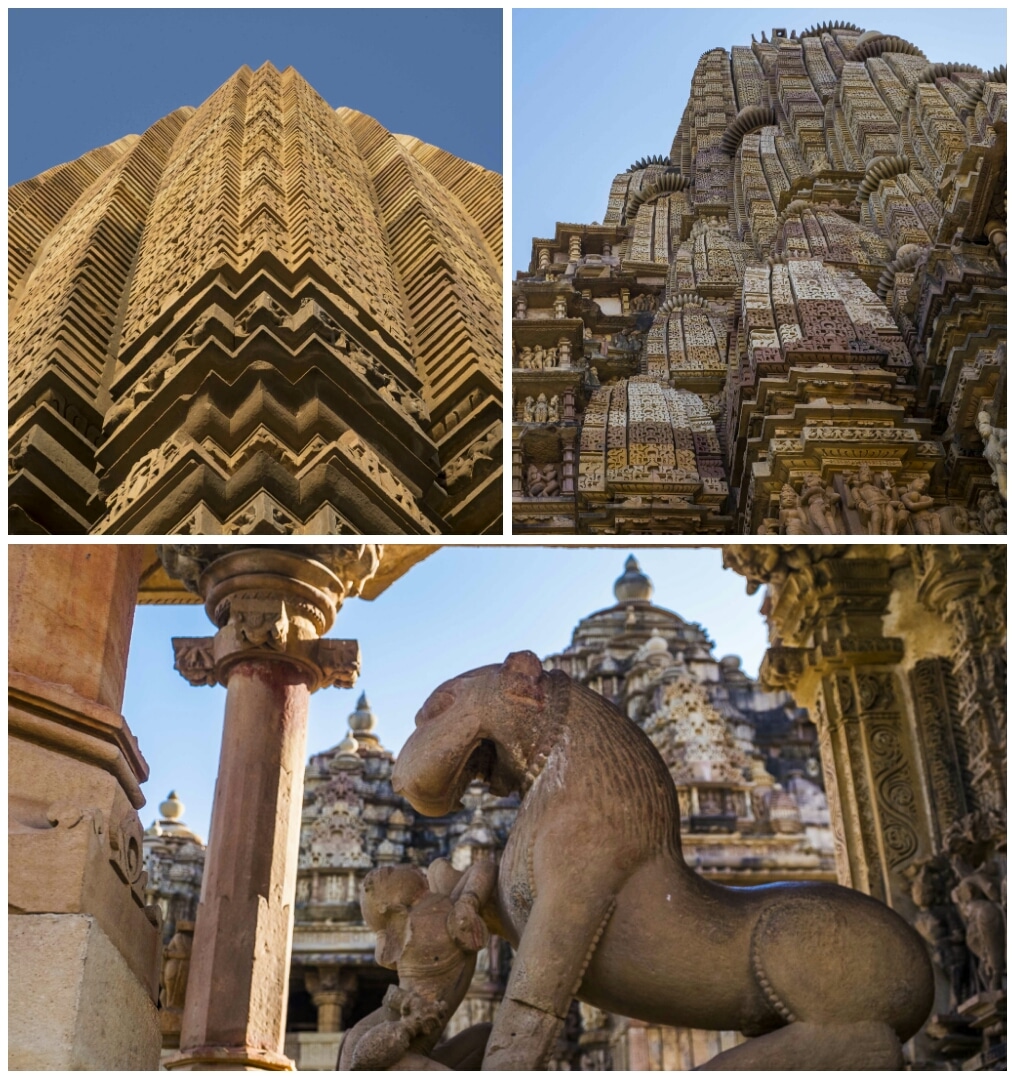
After three days there we arrived at a wildlife lodge just outside Panna National Park, on the banks of the River Ken. The Sarai at Toria looked lovely and we were excited, despite being a bit off, at spending a couple of days in the open. We got there at lunch time, after a long auto ride through the fields with a chatty auto driver. Lunch was spinach soup and two kinds of salad, light and perfect, with homemade rolls that were warm and soft. Needless to say we ate well, the food was yummy and a welcome change after days of the typical restaurant fare.
A caravanserai is a place for weary travelers to rest, and were commonly found in Persia and along trade routes in Empires of Northern India, Pakistan and Afghanistan. We have seen the ruins of many during our travels across the country and pictures and paintings of what they might have looked like. The Sarai at Toria, along the river Ken, is at once the perfect place for a traveler and wildlife enthusiast, and has that unique ability of being extremely luxurious without pretension. The place was built by Joanna and Raghu almost a decade ago, wildlife photographers and conservationists who are extremely passionate about the jungle and the region. It shows not only in their conversation and work with the local community, but also in the little things that have gone into creating the beautiful resort that is their home 9 months of the year.
With 8 spacious cottages built over 12 acres, with locally sourced material and design elements, the resort is somewhere in between a homestay and a wildlife resort and definitely not one of your typical panna hotels. Joanna is a perfect host, warm and attentive and while Raghu is a little more reserved, he is always happy to chat about nature, share his vast knowledge on decades of work in tiger conservation and cooking. There is plenty to do at the Sarai, from activities in the park, a slow boat ride down the River Ken, a walk to the nearby village of Toria, or a chance to experience the stunning Temples of Khajuraho.
After lunch we quickly settled into our cottage at the resort, done up in warm earth tones with bright cushions and accessories. That evening we took a boat ride down the river, organized by the resort and had our first glimpse of the Panna National Park. The boat safari in small row boats is perfect to get up close and personal to the many birds that make this water body their home, and we saw a few including the White necked stork, Lapwings, Kingfishers and a few others we didn’t recognize. The rock formations on the river were rather different and funky and added to the lovely sunset we experienced. After a scrumptious dinner we settled in for our safari the next morning. ‘The chef Bahadur, has been with Raghu for over 20 years and fell into cooking quite by accident’, said Joanna. He would help out in the kitchen when needed and found a new love. After the meals we had at the Sarai, we are kind of glad he did.
Spread over three plateaus and many ridges, the Panna national park is the northernmost tip of the teak forests and the southernmost part of the deciduous Upper Gangetic plain, which gives the park a unique and beautiful mix of flora. A once thriving tiger sanctuary and haven, the early part of the decade saw the park loose of all tigers to poaching and mismanagement. However in the last few years the tiger population in Panna is once again on the upswing after 4 were relocated to Panna from other parks in Central India. With the growing tiger population and renewed efforts towards conservation, Panna is gaining fame as an emerging destination to try and spot the majestic Bengal Tiger away from the established but overcrowded jungles of Bandhavgarh, Kanha and Pench. “Tiger tourism benefits the local economy, all the guides are from villages around and have grown up here, they know the jungle extremely well,’ Raghu tells us. Apart from his many pursuits, he is also working with the local community on building tourism potential and teaching them how to live in tandem with the forests.
The early morning safari, usually idea for animal spotting, is chilly at first but warms up as the sun rises. The park is lovely and different from the others in the region, with the ridges and many gorges giving it a unique feel. Drives are permitted only on two plateaus, the topmost is closed for safaris, and all around us is the tall dry grasslands, with clusters of deer and the occasional Nilgai and wild boar. Far below is the river and by mid-morning you are likely to see a crocodile or two basking in the sun on the banks, as we did.
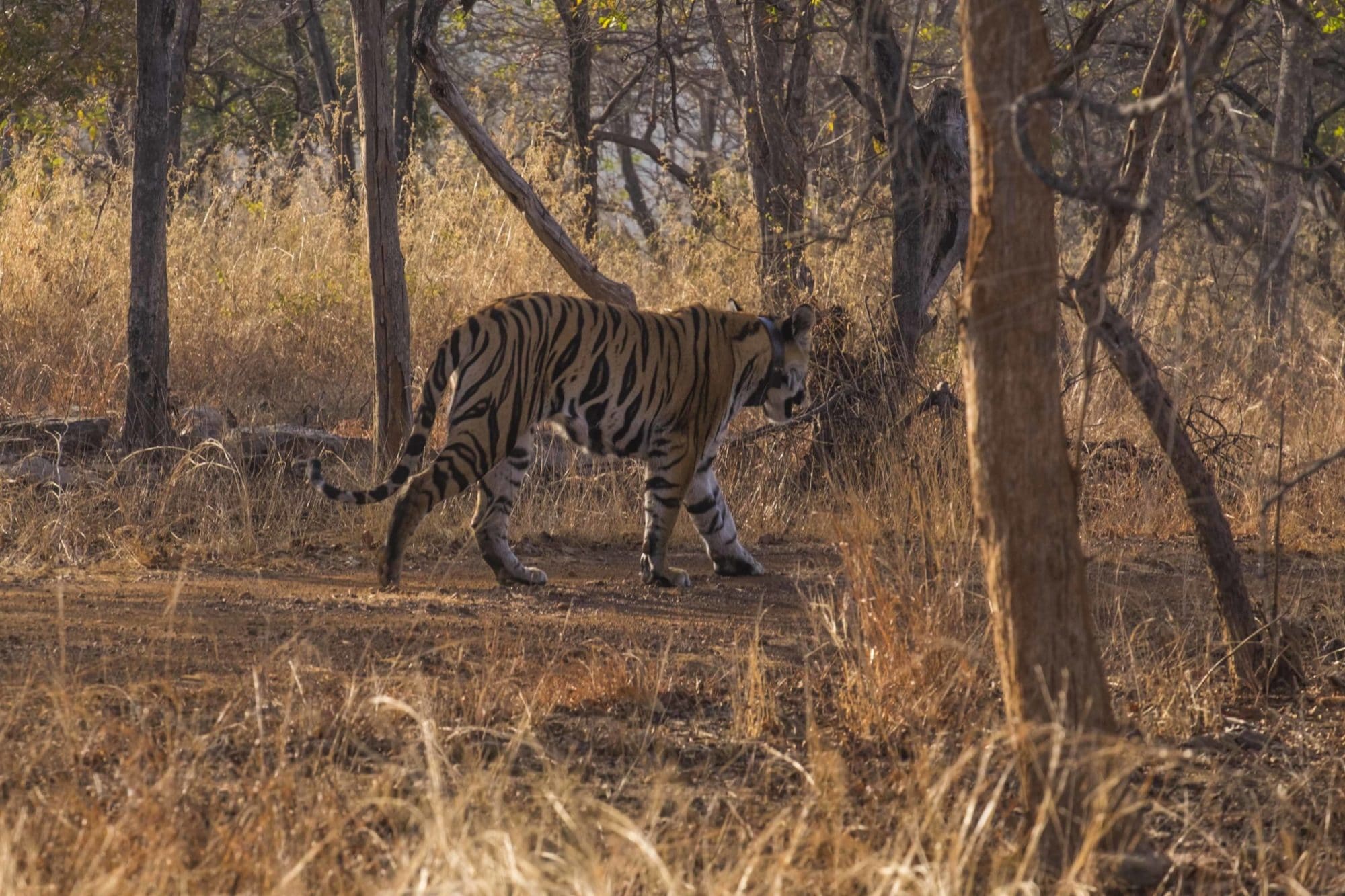
Our forest guide Vijay was exceptionally motivated and enthusiastic about the jungle, his home, and did a fantastic job of bringing all the sights and sounds of Panna closer to us. Thanks to him and our driver from Sarai, we spotted a forest van and followed at a close distance and suddenly around the corner we were treated to the sight of a female tiger, walking deliberately along the path in a fixed direction as if looking for something. We’ve seen tigers before, but the sight is always awesome and inspiring and instills a sense of wonder about nature and the wild life in a jungle. While tigers are growing in number, sightings are still rare in Panna and we were extremely lucky and super happy to have seen the daughter of T2, one of the female tigers relocated here.
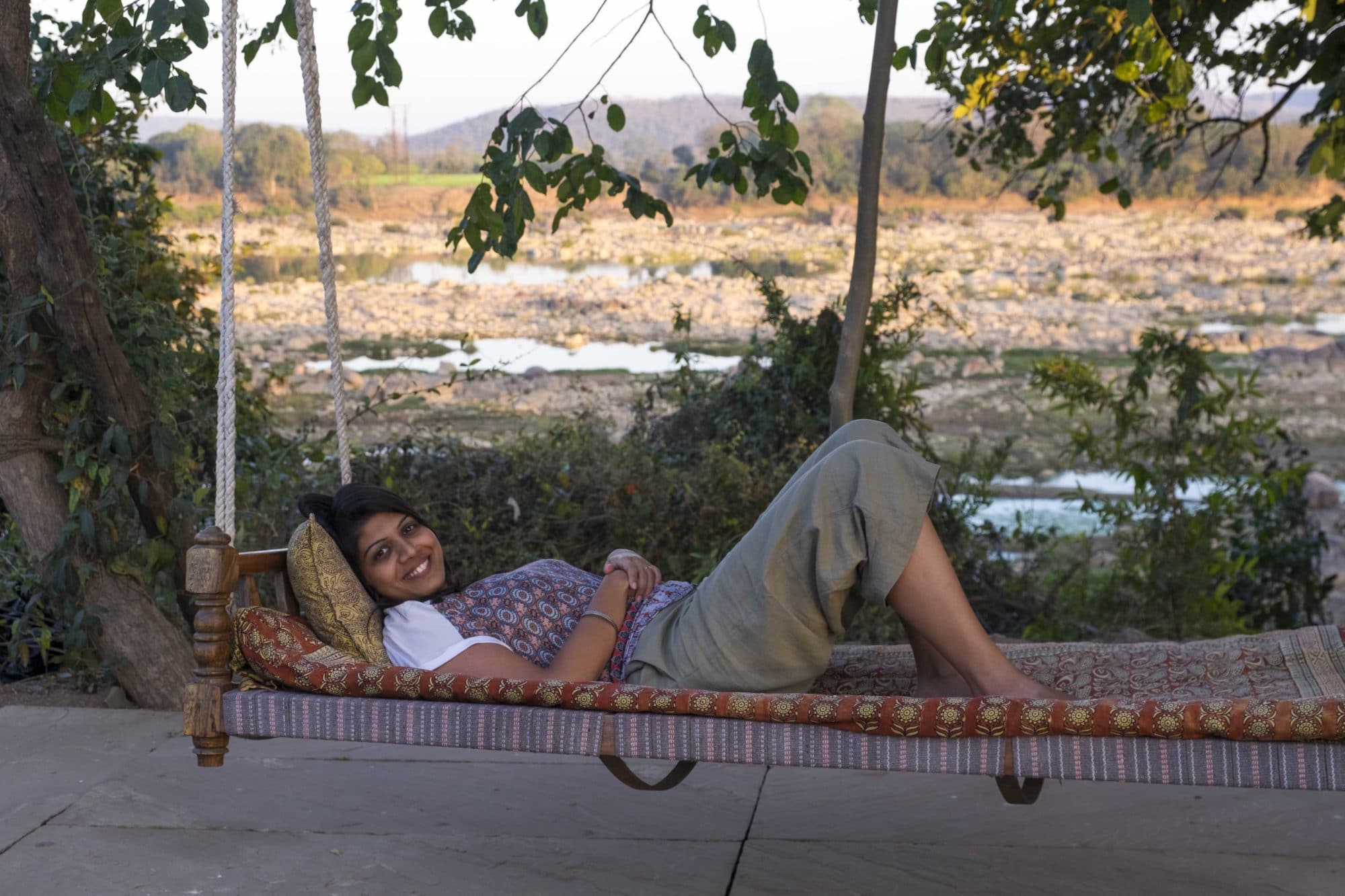
We spent the rest of our time at the Sarai wandering the nearby villages, exploring ancient history in the region, reading in the large open style shared living space and chatting with our hosts. Nearby Panna town has a few remnants of Bundeli style forts and ruins of palaces and cenotaphs to explore, but it is the temples of Khajuraho, detailed and captivating that attract the most attention. Much has already been said and written of the temples, the erotic carvings that surprise visitors who travel through an otherwise conservative land; the sheer scale and size of the temples that dwarf the area around; the intricate detailing found even in the base structures that support the temples; and the beauty that is found in the symmetry of these ancient places of worship. Suffice to say you need to visit these atleast once in your lifetime.
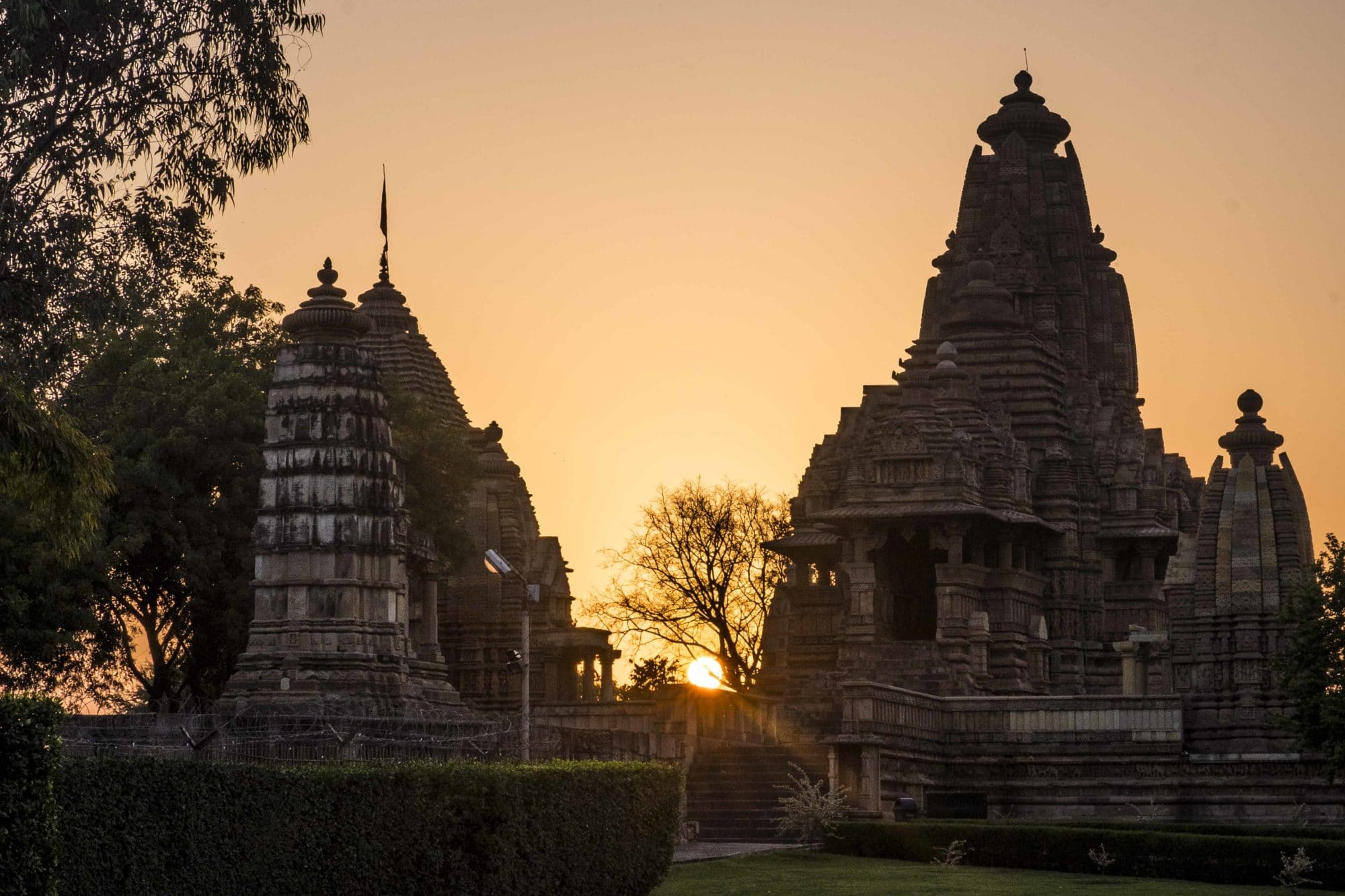
We’d spent a few days in Khajuraho before coming to Panna and were fortunate enough to be there at the same time as the Khajuraho Dance festival, which not only showcases the varied forms of classical dance in the country, but also provides a space for local artists and artisans to display their work. Here you can find handwoven khadi, Gond art, terracotta and pottery, metal work, and also get a chance to meet and learn from the tribes and villagers themselves whose history is closely connected to their art. There was also a stall with women cooking and selling fresh local cuisine, and we tried Bundeli style red yam, buttermilk with spices, roti made with lentils and soaked in the buttermilk, and assorted other vegetables. The food was yummy and quite different and the women were doing brisk business. The festival on the whole is wonderful, well organized and free for all.
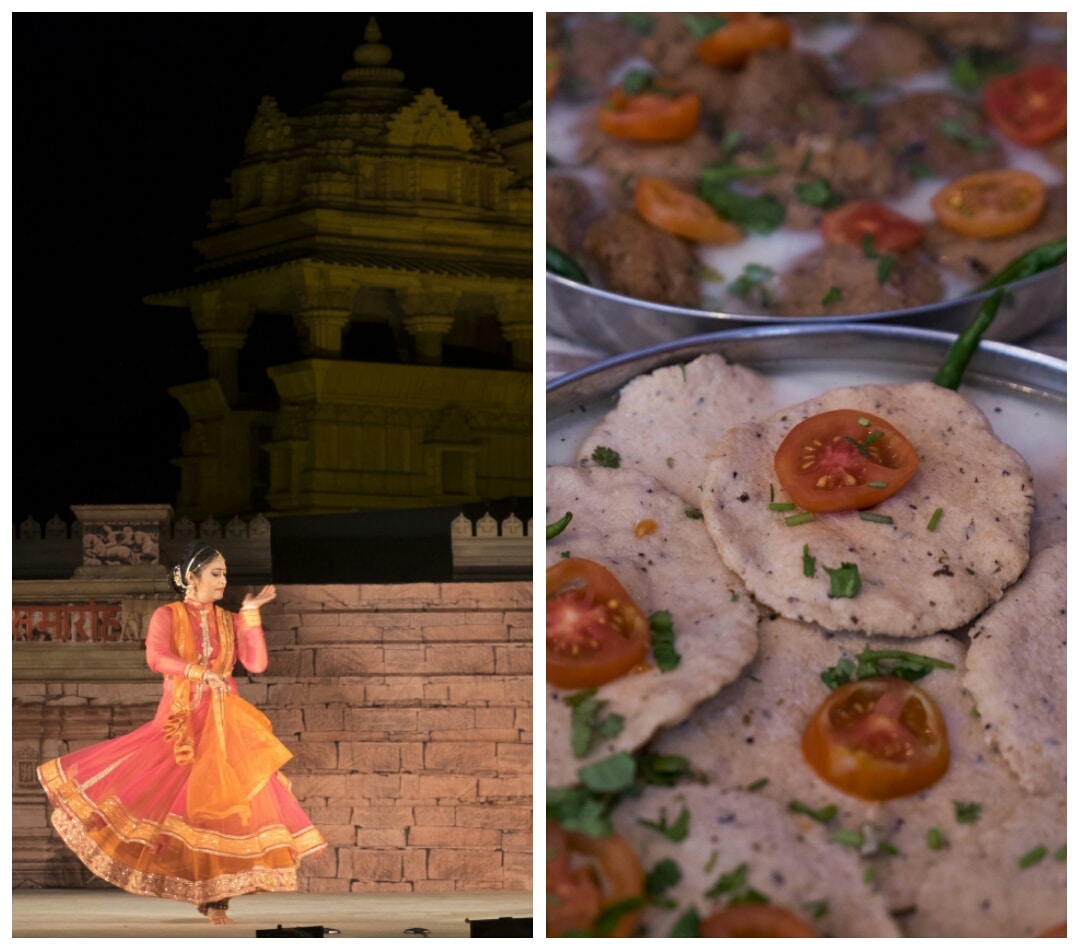
Some Useful Information:
How to get there: Panna National Park is located in Madhya Pradesh, about 45 kms away from Khajuraho. Khajuraho is also the nearest rail head and airport.
How much time to spend: Most people do Panna as a day trip from Khajuraho which is really not doing justice to the place especially if you want to take in a safari or two. We would suggest doing it the other way round. Stay at Panna at one of the many wonderful wildlife lodges and make a day trip to Khajuraho which is less than a half day away. The Western group of temples at Khajuraho which is the main attraction should take no more than 2 – 3 hours to see. We would recommend a stay of three nights to do justice to both the park and Khajuraho.
Where to Stay: Panna has a number of beautiful stay options but our pick is the lovely Sarai at Toria where you not only get to relax in a beautiful, luxurious, eco resort right by the Ken river, but also get to spend time with Raghu and Joanna, leading wildlife experts, both of whom have worked extensively on studying and conserving Panna’s tiger population. Oh and the food is to die for.